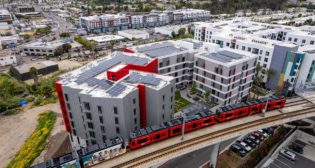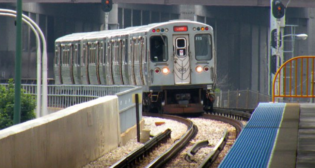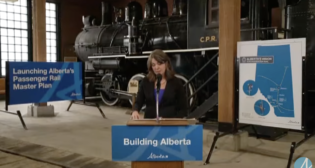
Transit Briefs: BART, VIA Rail, Metrolinx, Front Range Passenger Rail, LOSSAN Rail Corridor Agency
Written by Carolina Worrell, Senior Editor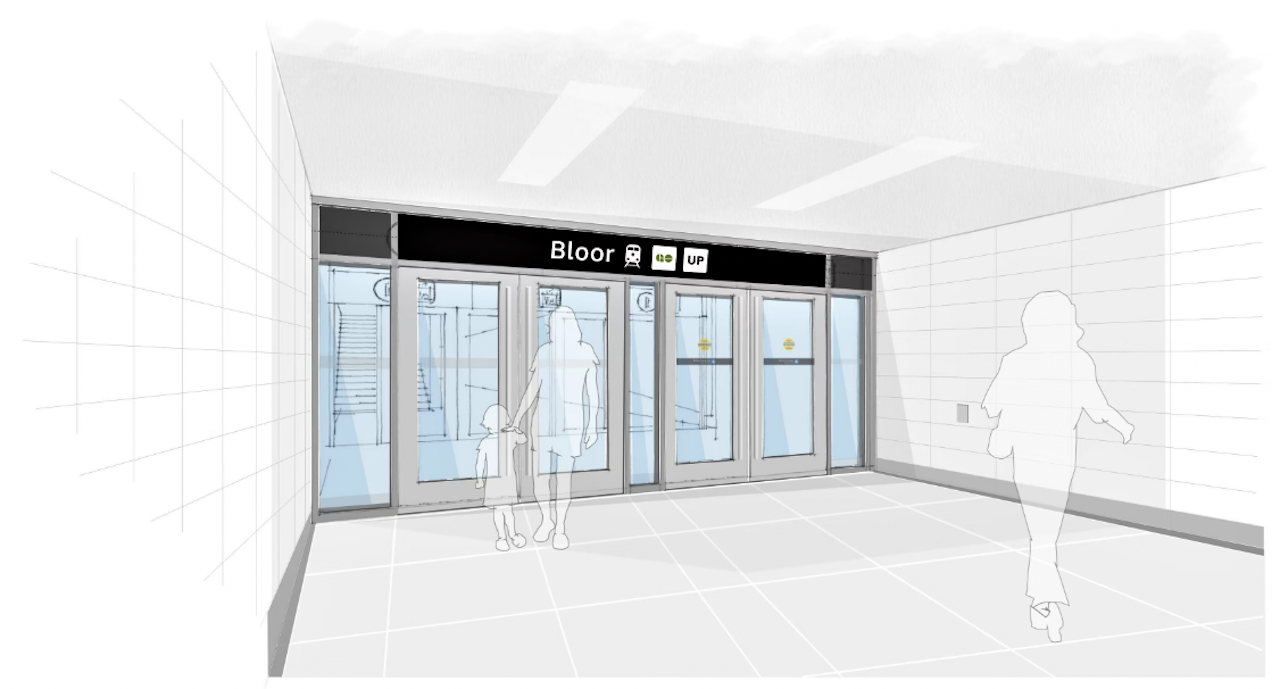
Rendering of new access from GO tunnel level to new stairs and elevator down to new concourse level. (Metrolinx image)
Transit oriented development (TOD) plans at Bay Area Rapid Transit (BART) stations get state boost. Also, VIA Rail Canada (VIA Rail) continues to see sustained growth in travel demand in Q2 2023; Metrolinx awards a contract for the construction of the Bloor-TTC connection; Gov. Jared Polis pushes for Front Range Passenger Rail vote in 2024; and the Los Angeles-San Diego-San Luis (LOSSAN) Rail Corridor Agency unveils a new rail safety initiative.
BART
Gov. Gavin Newsom has announced new support for plans to develop climate-friendly homes near two East Bay BART stations, the transit agency announced on Aug. 30.
The Catalytic Infill Infrastructure Grant investments target plans at West Oakland and El Cerrito Plaza. The funding will go to affordable-housing developers, as well as the cities of Oakland and El Cerrito. BART’s TOD program “leverages outside housing and infrastructure funding to advance development at and around BART stations in support of the District’s ridership, affordability, and climate goals,” according to the agency.
A $20 million grant to the City of El Cerrito will support TOD by funding preparation for the affordable housing structured parking, bringing in site utilities, and enhancing an existing bike and pedestrian trail. Funding will also support landscaping and green space, a bike station, and bus shelters. BART says it hopes to bring as many as 800 housing units, a new public open space, and potentially a public library to El Cerrito Plaza.
The City of Oakland is getting $40 million to support site preparation work including clearing, grubbing, and erosion control. Money will also go towards utility improvements, resurfacing of roads, and various capital improvements. The TOD plan for West Oakland calls for 762 residential units including 240 that qualify as affordable housing. There will also be 382,000 square feet of office space and 75,000 square feet of retail on approximately five acres.
The funding comes out of $239 million announced by Gov. Newsom to help launch housing projects across the state. The funding, BART says, is meant to help underserved neighborhoods build greener, more walkable communities and allow Californians to live closer to work and other key amenities such as public transit.
BART has 13 completed TOD projects at its stations. Another four are under construction and seven approved projects are in the pipeline. Completed TOD projects at BART have created more than 3,200 housing units including 900 that are affordable, according to the agency.
VIA Rail
VIA Rail on Aug. 31 announced that it has continued to see a sustained growth in travel demand in second-quarter 2023, with revenue and ridership up 37.7% (C$29.6 million) and 31.3% (240,179 passengers), respectively, compared to the same period last year.
“Our performance this quarter and over the past year shows a clear and steady trend of growing demand for rail travel in Canada,” said VIA Rail President and CEO Mario Péloquin, who took the helm on June 26. “Our efforts over the last months are bearing fruit, with more than one million passengers choosing VIA Rail between April and June 2023. As we continue our work to modernize and transform the way Canadians travel, the Corporation is well positioned to achieve near pre-pandemic performance as we enter the second half of the year.”
Additionally, four trains in VIA Rail’s new fleet continue their pre-commercial launch, and in May of this year the routes expanded to serve the Québec City-Montréal-Ottawa Corridor. By the end of Q2, almost 10,000 Canadians had the chance to experience the “unparalleled, barrier-free, and fully accessible travel experience offered on the agency’s new Venture fleet,” according to VIA Rail. All 32 new trains are on track to be delivered by 2025, bringing the agency “closer to realizing its vision of building a more modern passenger rail service for Canadians.”
Metrolinx
Metrolinx has awarded a contract for the construction of a pedestrian connection between the Bloor GO/UP Station and Dundas West TTC Station to Kenaidan Contractors Ltd, the agency announced Aug. 31. Work is expected to start this fall.
Once complete, the Bloor-TTC connection, Metrolinx says, will provide a safe and customer-friendly connection between GO Transit, UP Express and TTC services (subway, streetcar and bus).
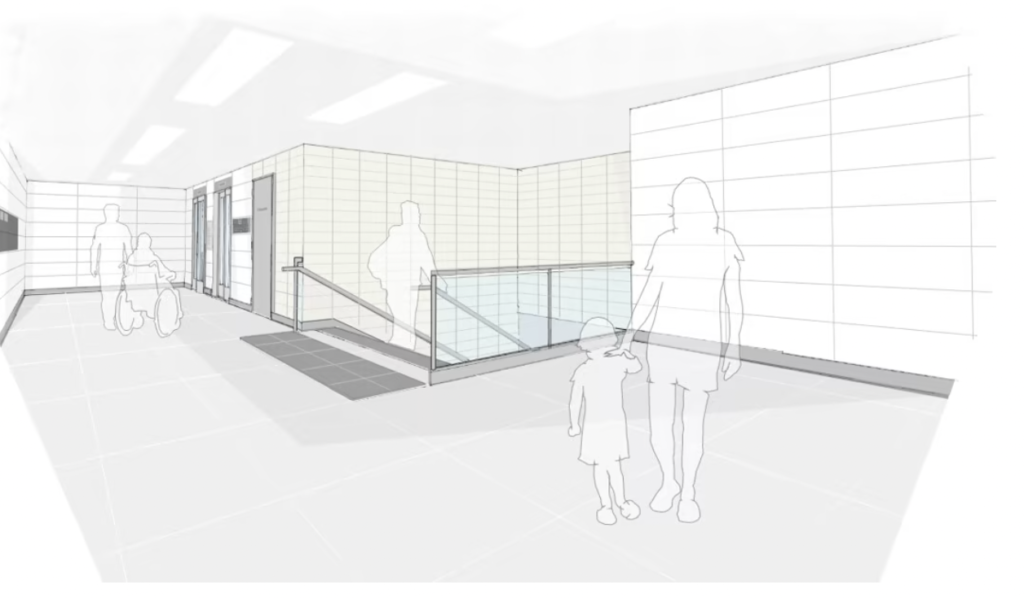
According to Metrolinx, the connection will shorten the distance between the two stations and save travelers on time. Currently, it takes about 5–8-minute to walk the 500 meters between both stations, depending on the weather conditions and the traffic.
The new pedestrian tunnel will be weather-proof and will shorten the distance to just 100 meters, which can be walked in two minutes.
The new tunnel, Metrolinx says, will also make it easier and safer for users with mobility challenges or traveling with luggage to get around.
The project includes:
- Constructing a new concourse in the lower level of The Crossways’ building (within the parking structure) and providing elevator access to the TTC platform level.
- Building two elevators and a stairwell connecting GO’s existing Bloor tunnel and the new TTC concourse.
- Creating a new electrical room with an upgraded emergency back-up and life-safety systems to help keep customers safe in case of power outages.
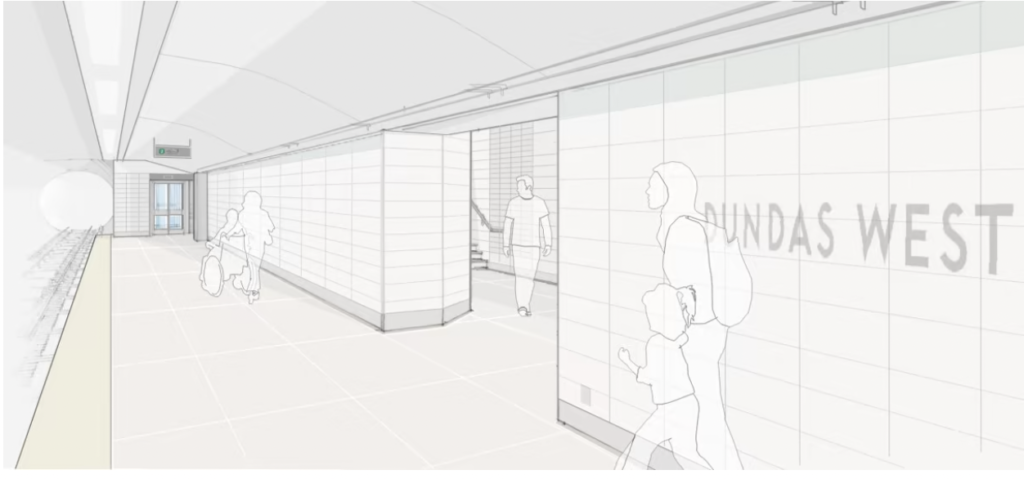
At the moment, Metrolinx estimates that approximately 600 transfers occur between Dundas West TTC Station, and Bloor GO Station each day, making both stations busy transit hubs.
With the GO Expansion program in the works and even more development anticipated for the area, the Bloor-TTC Connection, Metrolinx says, “will help accommodate even more customers and support the development of a regional rapid transit network that offers seamless connections to more stations and faster trains.”
Front Range Passenger Rail
Planners and supporters of a proposed passenger rail line from Pueblo to Fort Collins, Colo., including Gov. Jared Polis, are working toward a 2024 ballot measure that would ask voters to help fund the line, according to a CPR News report.
The train line would “likely operate primarily on its own tracks in existing freight rail corridors, could carry more than two million passengers a year, and could cost between $8 billion and $14 billion for a full build-out,” according to a 2020 analysis from the Front Range Passenger Rail District, and as reported by CPR News. “A lower-cost, interim version would have passenger trains on freight tracks.”
According to the CPR News report, supporters are hoping to fund the project through a combination of a new tax and federal infrastructure money.
“They see the November 2024 vote, which is expected to have a large turnout, as their best chance of convincing voters to support the plan. The question from planners is whether or not the project will be ready to face a vote from Front Range residents,” CPR News reports.
“We have to make sure we have a case to make to the public,” Jim Souby, Chair of the District’s Board of Directors, said in an interview.
“The governor also wants a 2024 ballot measure,” said Lisa Kaufmann, a long-time advisor of Polis’ “so long as planners are ready and the public appears supportive.”
“We’re never going to get the option of looking at ‘24 if we don’t set that as an aspirational goal,” Kaufmann told the district’s board in July. “But it might not be ripe in ‘24. And if it’s not ripe, then it doesn’t make sense to go forward.”
“State officials have slowly been laying tracks for a Front Range passenger rail line for years, commissioning preliminary technical work, creating a government district to help fund the line, and building public support,” according to the CPR News report.
“Now, rail backers are entering a critical phase of the project that Polis hopes will help shape growth and expand transportation options for Coloradans for generations to come. Between the 2024 ballot and the massive federal infrastructure bill President Biden signed in 2021, billions of dollars of potential funding are at stake.”
Some $12 billion of the $66 billion for passenger rail included in the federal infrastructure bill will go to developing new inter-city rail lines across the country, and Amtrak has “explicitly said it wants to open a line along Colorado’s Front Range,” according to the CPR News report.
“Still, federal support for Colorado is not a sure thing. The Front Range Passenger Rail district has applied for a Federal Railroad Administration (FRA) program that would grease the skids for more federal support and funding. The district should hear back in November,” according to the report.
LOSSAN
The LOSSAN Rail Corridor Agency, which manages Amtrak’s Pacific Surfliner service, announced Aug. 31 that Operation Safe Surfs, a rail safety initiative “designed to enhance rail safety awareness and curtail pedestrian and automobile incidents along the railroad,” is slated to launch in September to coincide with Rail Safety Month.
According to LOSSAN, Operation Safe Surfs adopts a “multi-faceted strategy for enhanced rail safety education and awareness through innovative methods.” The initiative will include:
- Rail safety advertisements displayed on internet connected televisions and streaming platforms for individuals residing within the counties where incidents are the most prevalent.
- Geofenced safety messaging distributed through cell phone advertising in areas considered incident hotspots using display advertisements, in-app advertisements, and cell phone notifications.
- Installation of signage along high-risk sections of the railroad, providing resources for suicide prevention and instructions for rail safety.
- Engagement of volunteer groups to provide outreach to individuals experiencing homelessness in proximity to the tracks and offer rail safety information, support, and care packages containing essential items and resources.
The inception of the initiative follows an in-depth analysis of trespasser incident data along the 351-mile LOSSAN corridor between San Diego and San Luis Obispo. The data indicates that “specific stations and adjacent sections of track experience higher rates of pedestrian and automobile incidents,” according to LOSSAN. Areas near the Solana Beach, Oceanside, Fullerton, Los Angeles, Carpinteria, and Santa Barbara stations “stand out as opportunities to incite positive change,” the agency said. “While the root causes of these incidents vary, they often involve unauthorized track crossings for beach access, encampments of unhoused individuals close to the tracks, and mental health challenges.”
“Rail safety is an important priority for our agency,” said Chair of the LOSSAN Agency Board of Directors Jewel Edson. “With Operation Safe Surfs, we’re not only expanding rail safety, but also providing support to our most vulnerable populations. We are confident that this initiative will save lives and make a meaningful difference for our communities.”
